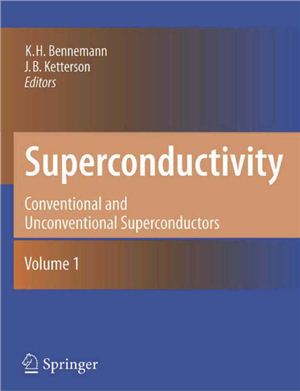Springer-Verlag, Berlin, 2008, 1568 pages
Conceived as the definitive reference in a classic and important field of mode physics, this extensive and comprehensive handbook systematically reviews the basic physics, theory and recent advances in the field of superconductivity. Leading researchers, including Nobel laureates, describe the state-of-the-art in conventional and unconventional superconductors at a particularly opportune time, as new experimental techniques and field-theoretical methods have emerged. In addition to full-coverage of novel materials and underlying mechanisms, the handbook reflects continued intense research into electron-phone based superconductivity. Considerable attention is devoted to high-Tc superconductivity, novel superconductivity, including triplet pairing in the ruthenates, novel superconductors, such as heavy-Fermion metals and organic materials, and also granular superconductors. What’s more, several contributions address superconductors with impurities and nanostructured superconductors. Important new results on current problems are presented in a manner designed to stimulate further research. Numerous illustrations, diagrams and tables make this book especially useful as a reference work for researchers, students and teachers. Treating the entire superconductivity field, this unparalleled reference resource carefully blends theoretical studies with experimental results to provide the scientist and engineers an indispensable foundation for further research.
Conceived as the definitive reference in a classic and important field of mode physics, this extensive and comprehensive handbook systematically reviews the basic physics, theory and recent advances in the field of superconductivity. Leading researchers, including Nobel laureates, describe the state-of-the-art in conventional and unconventional superconductors at a particularly opportune time, as new experimental techniques and field-theoretical methods have emerged. In addition to full-coverage of novel materials and underlying mechanisms, the handbook reflects continued intense research into electron-phone based superconductivity. Considerable attention is devoted to high-Tc superconductivity, novel superconductivity, including triplet pairing in the ruthenates, novel superconductors, such as heavy-Fermion metals and organic materials, and also granular superconductors. What’s more, several contributions address superconductors with impurities and nanostructured superconductors. Important new results on current problems are presented in a manner designed to stimulate further research. Numerous illustrations, diagrams and tables make this book especially useful as a reference work for researchers, students and teachers. Treating the entire superconductivity field, this unparalleled reference resource carefully blends theoretical studies with experimental results to provide the scientist and engineers an indispensable foundation for further research.

